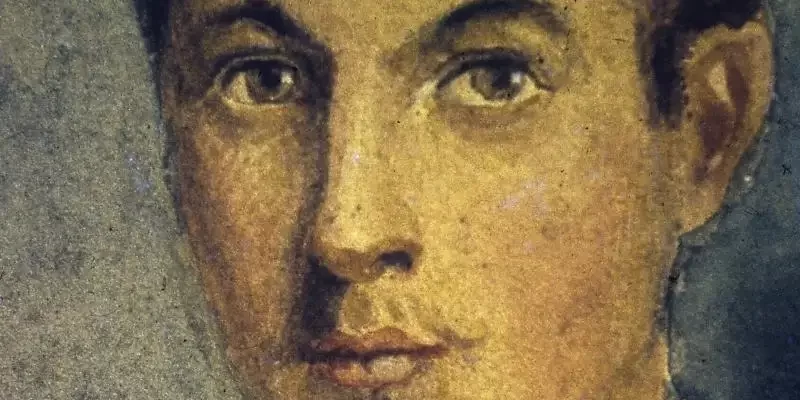Magyarul
Arthur Rimbaud was 21 when he gave up writing, Sándor Petőfi died at the age of 26, Ferenc Békássy fell at the Eastern front on 25 June 1915. If he only had written his last poem: „Költő akartam lenni…” (’I wished to be a poet..’), or the other that goes: „Jöjj, szólt a herceg” (Come – said the prince’) or „Bacchus”- the one he was writing and rewritng for 5 years he would earn his rightful place in Hungarian poetry, but needless to say he wrote a lot more then these. If he had written no more but his essay on Hungarian poetry in which he translates Ady, Babits, Kosztolányi to English for the first time, he would deserve a reserved seat in Hungarian cultural history but he wrote a lot more, of course. If he had written only a few letters to Noel Olivier he would have provided more then enough sources for the Hungarian-English relations but he wrote 32 letters to her and corresponded with other members of the British elite such as John Maynard Keynes. If he had done nothing else but return from Cambridge and die as a hussar hero for Hungary in one of the first major battles of the war, even then we ought to keep his memory alive. Needless to say there is a lot more to it then this.
Békássy lived for a mere 22 years and achieved as much as many cannot do even if they live to be a 100,
because they are not interested in the world, they a only care for themselves. We have to make a living – they say and go on compalining about the weekdays…and that it is not their fault that they cannot speak other languages or read or train themselves from time to time. It is always somebody else’s fault and responsibility, not theirs. Those who read and learn are wealthier. Békássy read and worked non stop. Luckily for us he wrote as well.
According to Endre Czeizel genetic scientist the Békássy phenomenon is the so called predeceased talent that never reaches its bloom. Although the good professor is absolutely right when he claims that:
’the Békássy phenomenon is to be considered a memento for the good and benefit of young lives and potential geniouses as safeguarding talent equals saving lives as well.’
On the other hand I have to disagree with him when he suggests that the so called ’fate factor was the obstacle that omitted Békássy’s extraordinary intellect to succed.’ It is completely unacceptable that he only tries to interpret writers and poets from a genetic, psychologic or ancestral point of view. I have to admit that his work on geniouses is utterly important but I cannot accept these points at all. The fact that somebody could make it to be a great poet and a remarkable personality regardless of ’fate factor’ and painfully short ’time factor’ lies in the core of the Békássy paradox.
Poets do not follow the footsteps of the ancestors, they follow the gods.
The poet according to T. S. Eliot is: ’…a spectator and not a character’. Béla Hamvas adds to this that: ’poets are nowadays considered to be idle charecters not worth taken seriously as oppoesed to the rational and sober common people, ignoring the fact that whatever these good men of ratio utter is mere idleness compared to the words of poets that represent a higher order of sobriety.’
Ferenc Békássy was more sober than most of his environment, wiser than his peers, more clever than his friends and yes, he died at the age of 22.
Between 2005-2010 I absorbed in his life story and writings and within these 5 years we managed to publish his collected works, his biography and a few years later in 2013 we also launched his letters to Noel in Hungarian. In the meantime with the help of the best professors of literary history such as László Szörényi, Lajos Sipos or George Gömöri I could publish several essays and articles about Ferenc Békássy and I also admit that he had a huge impression on my poetry as well.
Since he passed away in 1915 there was but a tiny selection of his writings published in 1990 thanks to Zoltán Éder (apart from BF’s mother’s limited publications after the war) although even Adriatica that was launched by Virginia Woolf and co in England, 1925 is more monumental than that. Today, in 2015 there is a quasi Békássy renessaince compared to that. Or is there such? Are his works respected and read? Hopefully they are, now that they are fully available.
In this past decade not only Békássy’s writings came out but also some other pieces of art that relate to him.
The painter Sándor Nagy- a representative member of the Gödöllő group and Hungarian art nouveau- designed 9 stained glass windows to the chapel that should be raised in the Zsennye park above the tomb of Békássy just like a shrine of poetry.







